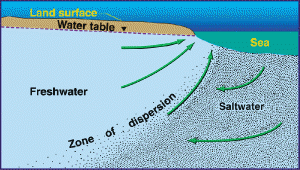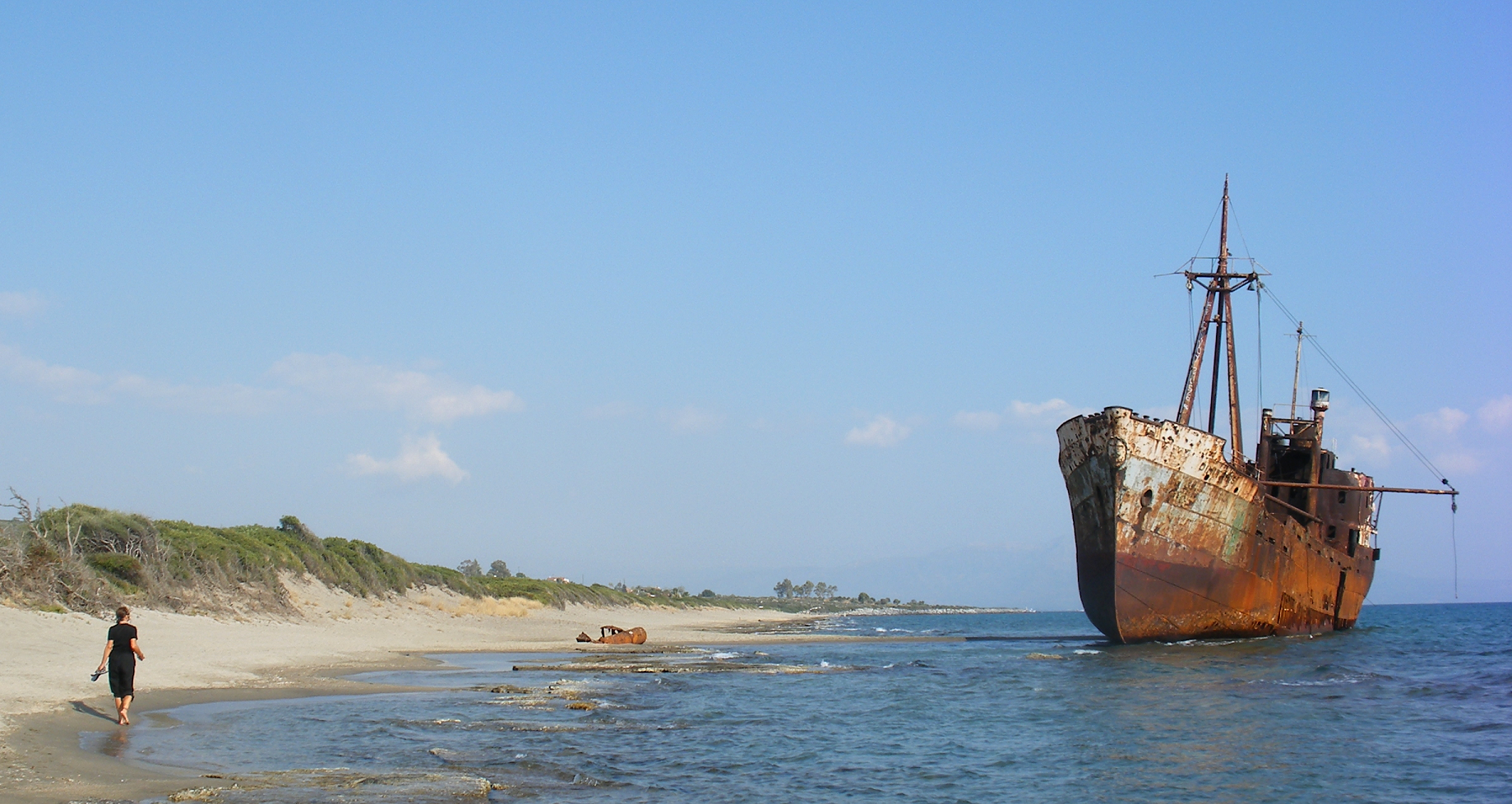Saline water intrusion is the movement of seawater into fresh water aquifers or surface reservoir due to natural processes or human activities. As Bangladesh belongs to one of the seaside countries, the adverse impact of saltwater intrusion is significant here.
The coastal areas of Bangladesh, with near flat topography and location at the tip of “funnel shaped” the Bay of Bengal, are susceptible to a number of disasters and saline water intrusion is a prominent one. A soil survey by six government agencies, including the Bangladesh Rice Research Institute (BRRI) and the Bangladesh Agricultural Research Council (BARC), found higher-than-acceptable soil salinity in the arable land of the southern region of Bangladesh.
With the accelerated impacts of climate change, salinity extends from the exposed to the interior coast hampering crop production. Among many reasons behind this growing problem, high rates of pumping for irrigation and other uses from the shallow aquifers, downward leakage of arsenic concentrations, high concentrations of Nitrite are most common.
The rising shrimp cultivation business is also rendering the fertile soil mostly in the southern part of Bangladesh.
So there has been arising some major issues like poor drainage through its river systems, salinity ingress along the rivers, cyclonic storm surge, moisture stress in the dry season, the rise in sea level and flood (Halcrow-WARPO, 2001). As a result, the 1m rise in sea levels would inundate 20 percent of the country’s landmass (Intergovernmental Panel on Climate Change).It is clear that climate change is taking its toll in the form of saline water intrusion into the mainland of Bangladesh, one of the lowest-altitude countries in the world.
So there are some probable recoveries consisting structural and non-structural managements to reduce saline water intrusion.

Strategic Aspect to Reduce Salinity Intrusion:
One of the major strategic aspects to reduce salinity intrusion is to intercept the upcoming brackish water, desalinate it with a brackish water reverse osmosis installation, and dispose of the concentrate in a deeper, confined aquifer. The fresh-brackish interface in the source aquifer is stabilized by simultaneous abstraction of the fresh and brackish parts. After desalination, the abstracted brackish water provides an additional source of drinking water. The main benefits of the methodology are to return the mixing zone into the original status and to reach a dynamic balance between fresh and saline groundwater through two processes. The reduction of abstraction rates aims to reduce the pumping rates and use other water resources.
Recharge is the primary method through which water enters an aquifer. Groundwater recharge or deep drainage or deep percolation is a hydrologic process where water moves downward from surface water to groundwater. Groundwater recharge can be classified into natural recharge and artificial recharge.
Natural recharge aims to recharge aquifers with additional surface water. Raising the efficiency of rainwater use by rainwater harvesting, groundwater recharge by conservation agriculture while artificial recharge aims to increase the groundwater levels, using the surface spread for unconfined aquifers and recharge wells for confined aquifers. The sources of water for injection may be surface water, groundwater, treated wastewater or desalinated water.The whole Abstraction-Recharge process helps to move fresh water/salt water interface toward the sea and is considered an effective method to control saltwater intrusion.
Structural Management:
Proper operation and maintenance of Deep Tube Well, improving the management efficiency, increasing electrification of DTW, sinking new DTWs in the potential areas may increase crop production.
Improving the resilience of agricultural ecosystem by practicing agroforestry that utilizes and maintain biological diversity.
Coastal embankment projects, dams, sluices.
Non-structural Management:
Large scale change in land use from long term plant species to perennials can be the solution to the increasing trends of salinity. A number of studies have demonstrated that increasing the area of perennial plants will have substantial negative effects on stream flow.
Investigation of the aquifer systems, understanding of formation behavior, regular monitoring of groundwater storage and quality and integrated water management resource through Remote Sensing.
Comprehensive studies on the hydrochemical and hydrogeological understanding of the salinity intrusion to the groundwater and Soil-water- crop management is needed.
Sufficient understanding of catchment characteristics is an important issue to ensure and consider the impact of salinity management on a range of natural resource objectives.
Reducing of water for irrigation may increase the benefits of dry-land salinity.
Coastal area zoning as non-structural management to change the land use.
Seeds of high yield verities can be introduced. Tomato, Okra, Sugar Cane and Aroid are some vegetable crops that can be cultivated in the medium saline soils.
Reducing salinity of water plays a significant role in improving the groundwater resources in the arid and semiarid the southern part of Bangladesh. In order to understand the function and efficiency of this system and have proper recoveries, the contribution of such systems needs to be quantified using proper techniques with governmental guidance.
The road to sustainable energy production in Bangladesh
Shooha Tabil
student, Bangladesh University of Engineering & Technology
